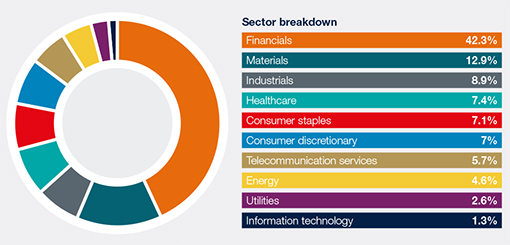Publications
A guide to the Australian Securities Exchange (ASX) – General Admissions
Why list on the Australian Securities Exchange (ASX)?
Australia currently ranks as the 12th largest economy in the world (measured by GDP), and the 3rd largest in the Asia Pacific region.
Australia’s steady economic growth has been, until recently, aided by a resources boom that has seen it emerge as one of the largest global suppliers of raw materials (coal, iron ore, etc).
Australia has become an attractive investment destination for global investors as well as home to many major multinational financial services providers.
The Australian Securities Exchange (ASX) sits comfortably in the top ten equity markets in the world measured by market capitalisation (with a market capitalisation of around US$1.6 trillion), and has a reputation for integrity and for attracting international investors.
There are approximately 2,200 entities listed on the ASX and, while it may come as no surprise that mining companies are well represented, the ASX is home to companies from a wide variety of industries including financial services, manufacturing, retail, media, transport, biotechnology, property, construction, tourism, telecommunications, healthcare, e-commerce services, infrastructure and primary production.

There are many reasons why companies choose to list on the ASX, including:
The need to raise new capital from a wider market for growth strategies. The ASX is regularly ranked in the top five exchanges for equity capital raising and AUS$8.6 billion was raised from ASX floats in 2015.
- To expand and improve their public profile with a range of stakeholders, including institutional and professional investors (Australia has the largest pool of investable funds in the Asia-Pacific region).
- To enable management and staff to participate in employee share or option schemes.
- To provide a means for an orderly exit for early stage investors.
- To generate liquidity in their shares through the ASX’s strong secondary market, so that shareholders can realise value from their investments.
- To participate in a regulated and well regarded market.
The benefits must however, always be weighed against the responsibilities and costs that are associated with “going public” and particular regard must be given to the requirements of the Corporations Act 2001 (Cth) (Corporations Act) and the ASX Listing Rules which require increased transparency and the need to adhere to strict corporate governance standards.
Admission
The initial listing of a company on the ASX is governed by the requirements of both the Corporations Act and the ASX Listing Rules.
In order to be eligible for admission, an entity must fall within one of the three following categories:
General admission
To be eligible under this main admission category, an entity must satisfy either the “assets test” or the “profit test”.
To satisfy the “assets test”, the entity must at the time of admission have at least one of the below:
- Net tangible assets of at least AUS$3 million (after the costs of fund-raising have been deducted).
- A market capitalisation of at least AUS$10 million. The test is different for an investment entity.
It must also satisfy one of the following criteria:
- Less than half of the company’s total tangible assets (after raising any funds) must be cash or in a form readily convertible to cash (liquid assets).
- If half or more of the company’s total tangible assets are liquid assets then the company must have entered into commitments to spend at least half of its liquid assets.
Finally, in order to satisfy the “assets test” a company must meet minimum working capital requirements. A company must have at least AUS$1.5 million in working capital (or would have AUS$1.5 million in budgeted working capital if budgeted revenue for the first full financial year after listing was included). Some additional restrictions apply to mining exploration companies.
To satisfy the “profit test”, the entity must have carried on the same main business activity for three years and the entity’s gross profit for the previous three financial years must have been at least AUS$1 million in aggregate and its consolidated gross profit for the most recent year must exceed AUS$400,000 (supported by audited accounts).
Foreign exempt listing
This category is for foreign entities who are already listed on an offshore exchange that is a member of the World Federation of Exchanges, provided that the relevant foreign entity seeking listing on the ASX under this category is able to satisfy a more stringent “assets test” or “profit test”.
To qualify for this category, the foreign entity (unless listed on the NZX Main Board) must either possess net tangible assets of AUS$2 billion to satisfy the “assets test”, or must have achieved AUS$200 million in profit after tax in each of the previous three years to satisfy the “profit test”. Foreign companies that do not meet this criteria are able to apply for admission under the “general admission” category subject to meeting certain administrative requirements.
Debt listing
This category is for the admission of entities seeking quotation of debt securities only and is subject to certain other criteria including minimum net tangible assets and guarantee requirements.
For simplicity, this guide only deals with the “general admissions” category, however, please do not hesitate to contact us should you require any further information on the “foreign exempt” or “debt” listing categories.
There are a number of additional conditions that must also be met in order for an entity to qualify for admission including the following:
Spread of shareholders
To meet the ASX requirement that a listed entity must have a satisfactory spread of shareholders, a company must have at least one of the below:
- 400 shareholders, each holding shares with a value of at least AUS$2,000.
- 350 shareholders, each holding shares with a value of at least AUS$2,000, and at least 25% of the company’s shares must be held by parties unrelated to the company and its directors.
- 300 shareholders, each holding shares with a value of at least AUS$2,000, and 50% of more of the company’s shares must be held by parties unrelated to the company and its directors.
It is not necessary to have the required shareholder spread before the listing application is made. Typically, approval for listing is granted subject to the company meeting the shareholder spread requirement through an IPO of shares associated with the listing application.
To promote liquidity in the Australian market, the ASX encourages overseas companies seeking a listing on the ASX to obtain and maintain a sizeable and diverse shareholding base in Australia. The ASX also recommends that companies listing on the ASX have a reasonable free float at the time of listing.
Prospectus
A prospectus is required to be issued by the entity seeking the ASX listing, which must be lodged with the Australian Securities and Investments Commission (ASIC). In some cases, however, the ASX may agree to the issue of an information memorandum in place of a prospectus where a company does not need to raise capital and where the company already meets the shareholder spread requirements under the ASX Listing Rules.
The form and content of any prospectus must comply with the requirements of the Corporations Act and must contain all information that investors and their professional advisers would reasonably require to make an informed assessment as to:
- The rights and liabilities attaching to any securities that are being offered.
- The assets and liabilities, financial position and performance, profits and losses, and prospects of the company.
The prospectus must be presented in a clear, concise and effective manner. While the Corporations Act requires that certain information must be disclosed, generally the content of prospectuses is not specifically prescribed. However, in practice, certain minimum expected disclosure standards have been developed to meet the requisite legal requirements.
For instance, prospectuses prepared for resource companies generally include a legal report on mining tenements along with further independent technical reports on geological, engineering and mining operations. All disclosures contained in a resource company’s prospectus, including any independent technical reports, must conform with the Australasian Code for Reporting of Exploration Results, Mineral Resources and Ore Reserves (JORC).
Additional prospectus requirements also apply to foreign companies listing on the ASX, which require the prospectus to include information regarding the rights that attach to the shares in the home jurisdiction of the foreign company, as well as a summary of the disclosure and takeover rules and regulations of the foreign company’s home jurisdiction.
Preparing the prospectus can be a time consuming process as stakeholders are required to embark on a detailed due diligence exercise to ensure that material information which is known (or could reasonably be found out by making enquiries) is included in the prospectus.
A properly co-ordinated due diligence process (involving suitably qualified personnel) will not only identify material issues for disclosure in the prospectus but may also afford stakeholders with a potential defence against any liability that may arise in the event that the prospectus subsequently turns out to be defective.
Minimum share price
The issue price or sale price of all securities for which the entity seeks quotation must be at least AUS$0.20 at the time of admission. Further, if the entity has issued any options, the exercise price for each underlying security must be at least AUS$0.20.
Corporate Governance standards
The entity must provide a statement to the ASX disclosing the extent to which it will follow the detailed governance recommendations set by the ASX Corporate Governance Council. While the recommendations are not compulsory, if an entity does not intend to follow all of the recommendations it must disclose the reasons why.
Entities are well advised to have appropriate corporate governance policies in place and ensure that their employees are made aware of and adhere to these policies. Certain policies (such as a share trading policy) must be put in place in order to ensure compliance with the ASX Listing Rules.
It is also a condition of listing that the ASX must be satisfied that each director of the entity at the date of listing is of good fame and character.
Constitution
It is a condition of being admitted to the official list that a company’s constitution complies with certain mandatory requirements prescribed in the ASX Listing Rules. These requirements are not onerous and essentially provide that the constitution must not prevent the company from complying with the ASX Listing Rules.
Restricted securities
The ASX Listing Rules provide for the classification of certain securities as restricted securities, which are subject to escrow and restriction from sale or transfer for a period of up to two years from the date of listing.
Generally, restrictions may be applied to shares issued as consideration for the acquisition of speculative assets (e.g. exploration tenements) or shares issued to promoters on more favourable terms than those offered to members of the public.
Whether securities are treated as restricted securities, and the period that the restriction will apply, will be decided by the ASX on a case-by-case basis and will depend on a number of factors including:
- The category of the company’s admission to listing on the ASX.
- The nature and quantum of the consideration paid for the shares.
- The relationship of the shareholder to the company.
- The period the shares have been held.
Directors Interests
The directors of a publicly listed company are required to disclose various interests including any relevant interest they (or their associates) hold in securities of the company, and contracts to which the director is a party or under which the director is entitled to a benefit. Any changes in a director’s interest must be advised to the market as and when they occur.
Fees and timeline associated with listing
The costs associated with listing can be substantial, but can be kept to a minimum by proper planning and the early engagement of suitably qualified advisers.
In addition to the costs associated with engaging advisers (corporate advisers, underwriters, lawyers, accountants, share registrar, and technical experts) to assist with the listing application and preparation of the prospectus, fees are also payable to the ASX upon admission to the official list.
The following table sets out the initial listing fees payable for a typical ASX Listing:
| Value of equity securities for which quotation is sought (AUS$) (typically the total market capitalization of the entity. | Fee payable on application for admission (AUS$) |
|---|---|
| Up to AUS$3 million | AUS$30,000 |
| AUS$3 to AUS$10 million | AUS$30,000 + 0.5% on excess over AUS$3 million |
| AUS$10 million to AUS$50 million | AUS$65,000 + 0.10000001% on excess over AUS$10 million |
| AUS$50 million to AUS$100 million | AUS$105,000 + 0.06% on excess over AUS$50 million |
| AUS$100 million to AUS$500 million | AUS$135,000 + 0.04% on excess over AUS$100 million |
| AUS$500 million to AUS$1,000 million | AUS$295,000 + 0.036% on excess over AUS$500 million |
| Over AUS$1,000 million | AUS$475,000 + 0.03% on excess over AUS$1,000 million |
An entity must also pay an annual fee as set and published by the ASX.
The complexity of a company’s operations and the proposed scale of any capital raising will determine the length of time it will take to list a company. As a general guide companies should allow between four to six months to complete the listing process, however it should be noted that the process can take significantly longer particularly where key assets are located outside of Australia.
Obligations once listed
Continuous disclosure
Companies listed on the ASX are required to adhere to continuous disclosure requirements, which mandate the timely disclosure of information to ensure that the market is informed of events and developments as they occur.
Once an entity is or becomes aware of any information concerning it that a reasonable person would expect to have a material effect on the price or value of the entity’s securities, the entity must, subject to limited exceptions, immediately disclose the information to the ASX and the market.
Accordingly, prior to listing, it is essential that proper internal reporting protocols are established so that material developments can be quickly identified and released in a timely manner. A clear and concise continuous disclosure policy should be adopted and all employees should be made aware of their obligations in this regard.
Periodic disclosure
Companies listed on the ASX are also required to make mandatory disclosures (which are made available to the public) on a periodic basis including the following:
Half-year disclosure
Following the end of each half year of an entity, the entity must provide the ASX with the following financial information or documents:
- If the entity is incorporated in Australia or required to comply with the Corporations Act, a copy of the financial documents which a disclosing entity must lodge with ASIC under section 320 of the Corporations Act.
- If the entity is not required to comply with the Corporations Act, the financial information or documents prepared under the law of its home jurisdiction which are equivalent to those that a disclosing entity must lodge with ASIC under the Corporations Act. These accounts must be audited or subject to review and the audit or review report must be given to the ASX with the accounts.
Annual disclosure
The ASX requires an annual report to be sent to shareholders. This report must comply with the ASX Listing Rules and the Corporations Act and must contain the audited annual accounts as well as some additional information including:
- A distribution schedule of the number of holders in each class of equity securities.
- The names of the 20 largest holders of each class of equity securities.
- Information required by the ASX Corporate Governance Principles.
- If the entity is a mining exploration entity, a list of its interests in mining tenements, where the tenements are situated and the percentage interest it holds in each.
Quarterly disclosure
Where a company has been admitted to the official list under the “assets test”, on the basis that more than half of its assets are liquid assets, then it must lodge a quarterly report setting out the financial information prescribed by Appendix 4C of the ASX Listing Rules.
Furthermore, companies that have an interest in mining tenements are required to make additional quarterly disclosures in relation to mining, exploration and development activities undertaken and the expenditure incurred on those activities.
Regulated transactions
The ASX Listing Rules and the Corporations Act place a number of restrictions on what companies are able to do without reference to their shareholders.
For instance, listed entities are restricted in the number of securities that they may issue in any 12-month period without obtaining shareholder approval and they must not issue securities to related parties or enter into transactions with related parties (except in limited circumstances) without first obtaining shareholder approval.
Furthermore, if an entity proposes to make a significant change to the nature or scale of its activities, it must provide full details to the ASX before proceeding and the ASX may (depending on the extent of the proposed change) require the entity to obtain the approval of ordinary security holders and re-comply with the initial listing requirements.






